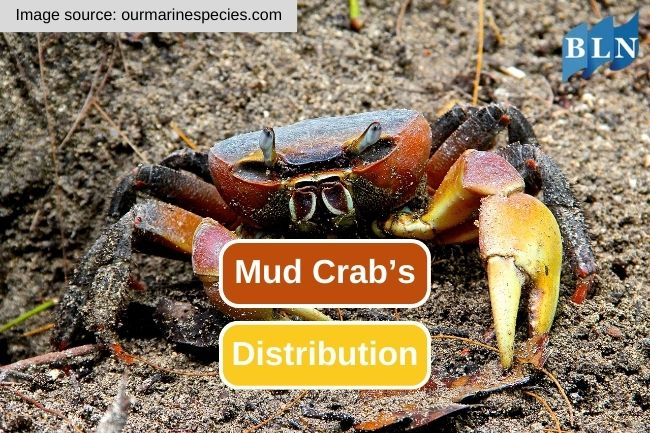The Fascinating Distribution of Mud Crab
By. Nevanda - 09 Nov 2023
lautnusantara.com - Mud crabs are a diverse and fascinating group of crustaceans that are widely distributed throughout the coastal regions of the Indian and Pacific Oceans. Known for their culinary appeal, mud crabs have captured the attention of seafood enthusiasts and researchers alike. In this article, we will explore the distribution of mud crabs, their preferred habitats, and the ecological importance of their presence in various ecosystems.
Read also: Get To Know About 9 Fun Facts of Mud Crabs
Habitat Preferences
Mud crabs are well adapted to thrive in a range of coastal environments. Their habitat preferences are closely linked to their life stages and the need for specific conditions to grow, reproduce, and avoid predators.
- Mangrove Ecosystems: Mangroves serve as primary nurseries for young mud crabs. The brackish waters and tangled root systems provide shelter and food for juvenile crabs, protecting them from larger predators. This is where they spend the initial stages of their lives, before transitioning to more open waters.
- Estuaries and Coastal Waters: As mud crabs grow and mature, they venture into estuaries, bays, and coastal waters. These areas offer abundant food sources, such as mollusks, small fish, and detritus. Their presence in these ecosystems plays a critical role in maintaining population balance and nutrient cycling.
- Burrow Construction: Adult mud crabs are known for their burrowing habits. They dig burrows in muddy substrates along intertidal zones and estuaries. These burrows serve as homes, providing protection from predators and adverse environmental conditions.
Read also: Meet Giant Mud Crab and Why It's a Popular Seafood Item
Global Distribution
Mud crabs are widely distributed throughout the Indian and Pacific Oceans. Their distribution extends across several countries and regions, each with its own unique population and characteristics.
- Southeast Asia: Mud crabs are abundant in countries like Thailand, Indonesia, the Philippines, and Malaysia. They are a valuable resource for local fisheries and play a significant role in regional cuisines.
- Australia: Mud crabs are found along the northern coast of Australia, where they are highly prized for their culinary value. Northern Territory and Queensland are major mud crab fishing regions in the country.
- India: The Indian coast, particularly in the Bay of Bengal and the Arabian Sea, hosts substantial mud crab populations. Fishing for mud crabs is an important livelihood for many coastal communities in India.
- Pacific Islands: Mud crabs are also present in various Pacific islands, including Papua New Guinea and Fiji, contributing to local economies and traditional diets.
Mud crabs are not only esteemed for their culinary appeal but also for their ecological significance in coastal ecosystems. Their distribution spans a vast expanse of the Indian and Pacific Oceans, reflecting their adaptability and resilience as a species. Understanding their habitat preferences, global distribution, and ecological importance is essential for their conservation and the maintenance of the rich biodiversity in coastal regions. Whether you're a seafood enthusiast or a conservationist, mud crabs are undoubtedly an intriguing and essential component of coastal ecosystems.
Read also: Fascinating Fun Facts About Amaebi







